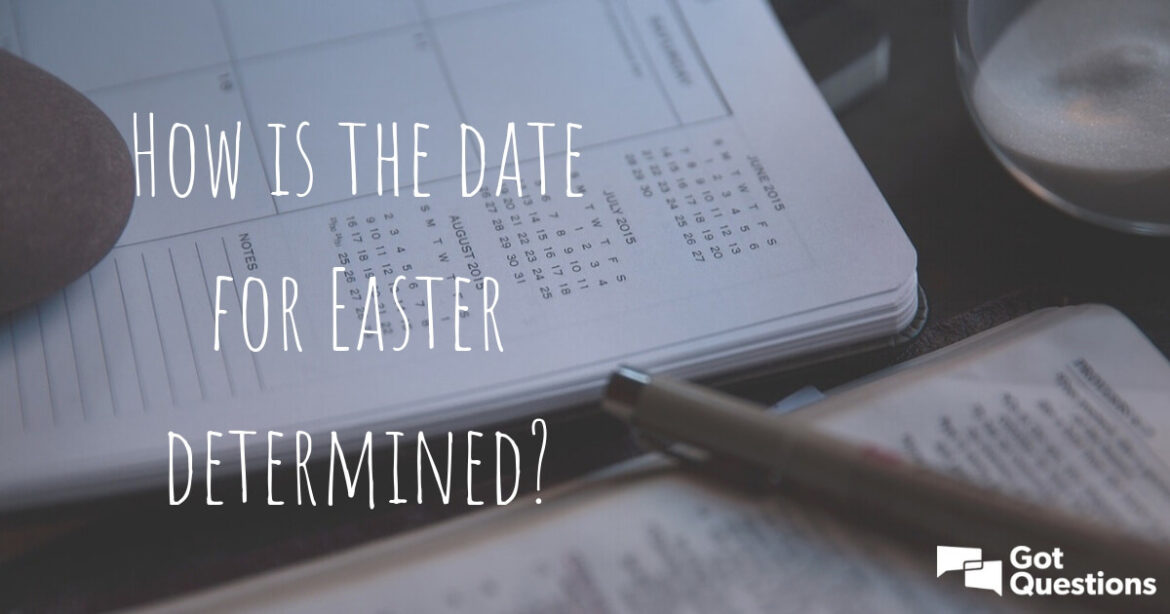The celebration of Easter stands as one of the most significant events in the Christian liturgical calendar, a vivid tapestry woven with the threads of resurrection, hope, and renewal. Yet, unlike fixed holidays, the date of Easter fluctuates each year, evoking both curiosity and bewilderment among the faithful. As if orchestrated by divine hands, the Church employs a myriad of calculations to determine the precise day on which this auspicious occasion unfurls, embodying the rhythm of creation itself.
At the heart of the date-setting conundrum lies the equation of lunar cycles and the solar calendar, an elegant dance reminiscent of the celestial movements that marked the very creation of the world. Specifically, Easter is celebrated on the first Sunday after the full moon on or after the vernal equinox (approximately March 21). This method, known as the Paschal Full Moon, anchors the holiday to both the phases of the moon and the seasons of the year, linking it intrinsically to the Jewish Passover, which is also determined by lunar calendars.
The selection of this date is steeped in rich theological significance. It was during Passover that Jesus was crucified and resurrected, a pivotal moment that altered the course of humanity. The intertwining of these two events serves as a reminder of the shared heritage of Christianity and Judaism, emphasizing the unity of God’s redemptive narrative throughout history. Thus, the Church, through its intricate calendrical calculations, not only commemorates the resurrection but also honors the historical and spiritual roots from which it springs.
While the general rule for calculating Easter dates appears straightforward, the complexities of the lunar calendar inject an element of unpredictability, resulting in Easter Sunday falling anywhere between March 22 and April 25. This annual variance fascinates both clergy and laity alike as they anticipate the arrival of spring and its accompanying promise of new beginnings. As the Church selects the date with precision, it parallels the way a gardener waits for the perfect time to sow seeds in the elusive space where light, moisture, and warmth converge.
Moreover, the ecclesiastical decision-makers employed elaborate methodologies, such as the Alexandrian system and the Dionysian tables, to further refine their calculations. These ancient scholars, much like mathematicians solving a profound riddle, understood the importance of accurate timing in the grand narrative of salvation. The month of April, often painted with vivid colors of blooming flowers and hopeful skies, embodies a fitting tribute to resurrection—a season when life triumphs over death.
In a broader context, Easter serves as an exemplar of hope, deeply resonating with the human experience. As the days lengthen, and sunlight begins to flood the earth, it invites reflection on the struggle and joy inherent in the Christian journey. Each Easter celebration becomes a rekindling of faith, drawing individuals back to the core message of Christianity: belief in the resurrection and the promise that death is not the final word.
The allure of Easter’s date lies not just in its mathematical precision but in its intricate ties to the wider rhythms of life. As one contemplates the rotating cycles of nature mirrored in the ecclesiastical choice of Easter, the notion that time and faith are inextricably linked becomes all the more palpable. The dance of the heavens thus serves to remind us that perhaps, like the cosmos, we too are part of a grander design, knit together in the divine fabric of existence.
Additionally, Easter’s variability invites a communal celebration rich with anticipation. Jews and Christians alike, through their respective calendars, bring together a phase of unity and remembrance. It symbolizes how diverse traditions can harmonize into a singular moment of jubilant proclamation. The emergence of Easter not only marks a date but symbolizes an active engagement in community, fellowship, and a shared journey toward understanding faith through the nuances of time.
As the Church navigates through charts and calculations, the unique appeal of Easter also speaks to the underlying faith that God, through Christ’s resurrection, transcends time. The Lord’s life, death, and resurrection happened in a particular historical milieu, yet it holds an everlasting significance that reaches through ages, cultures, and calendars. This dichotomy of timing—between the fixed nature of historical fact and the ethereal quality of faith—constitutes an essential aspect of the Christian message.
Contemplating the date of Easter beckons not only a realization of its astronomical undertones but may also evoke memories of personal journeys, milestones, and the joyous communal gatherings that accompany this day. Traditions such as bonfires, egg hunts, and family meals blend the sacred with the celebratory, anchoring the spiritual truths within tangible acts of love and devotion. Such rituals allow believers to articulate their faith more deeply as they converge around the significance of this shared experience.
Ultimately, the inquiry into the month and day on which Easter falls serves as an invitation to engage in broader theological discourse. It is a reminder of the delicate balance that exists between faith and tradition, history and meaning. Just as the Church meticulously bends time to honor vital truths, so too must individuals seek to cultivate an understanding of their faith—ever mindful of the divine mysteries that lie just beyond their reach. Easter, then, is not merely a day on a calendar; it is the embodiment of hope, eternally flourishing in the garden of the human spirit.



